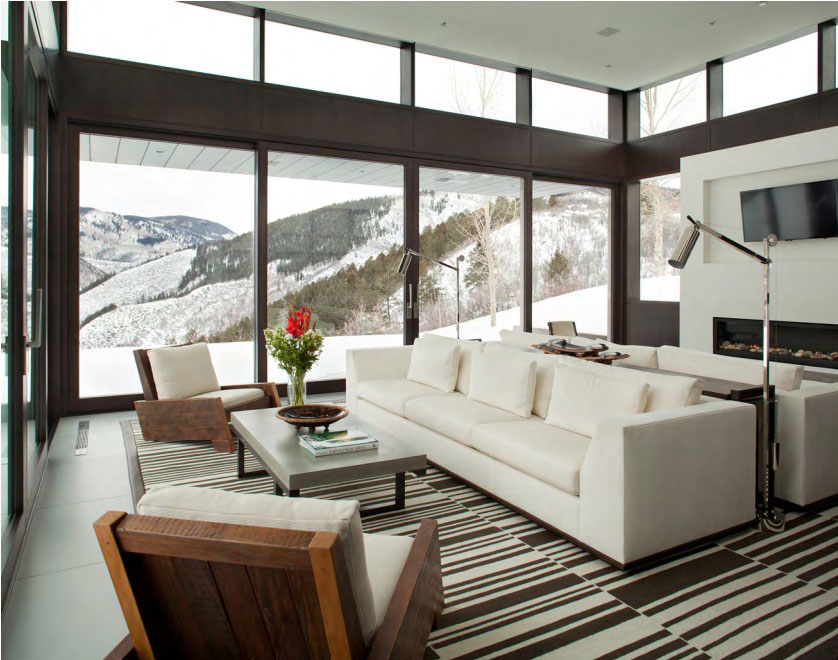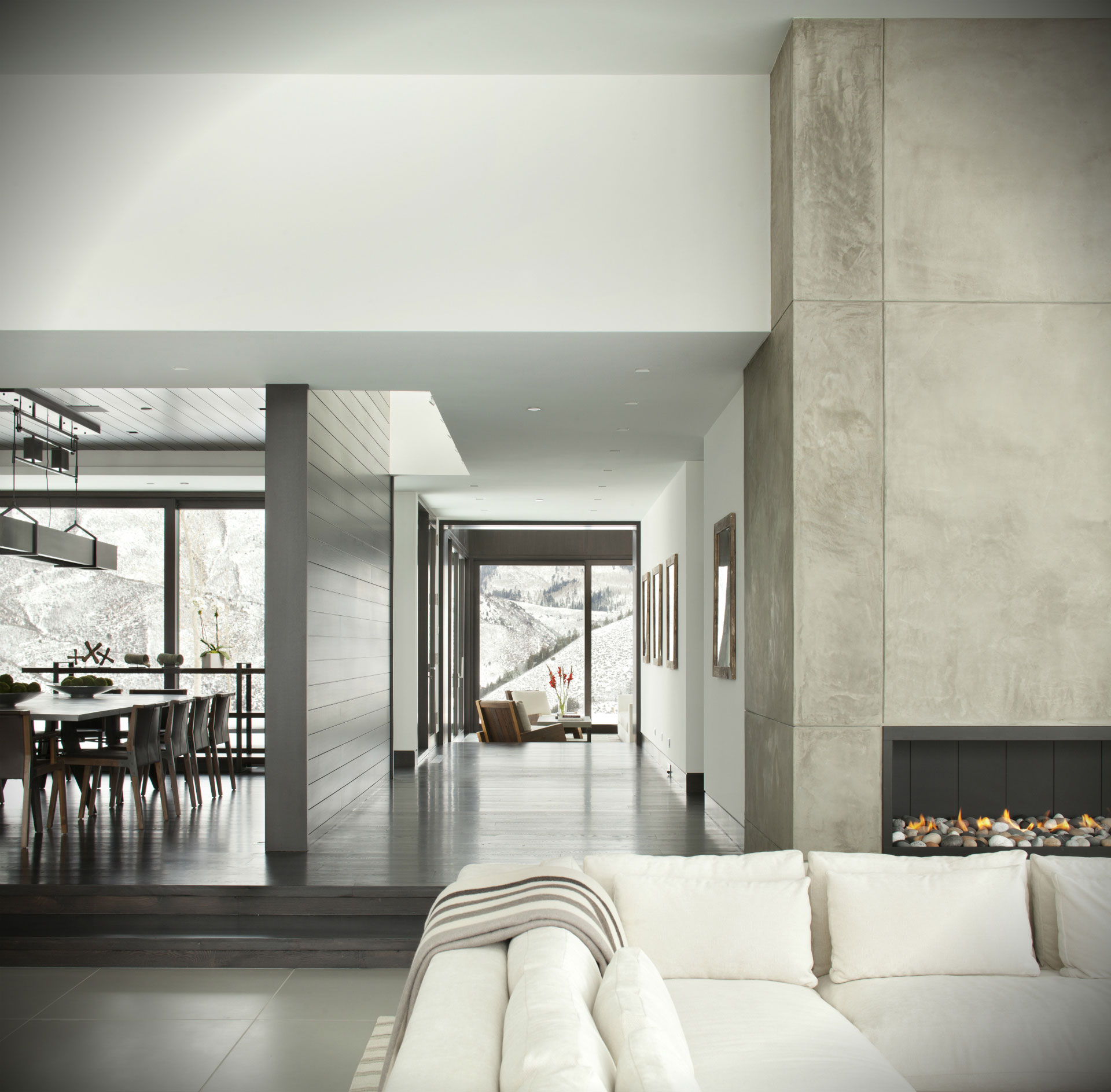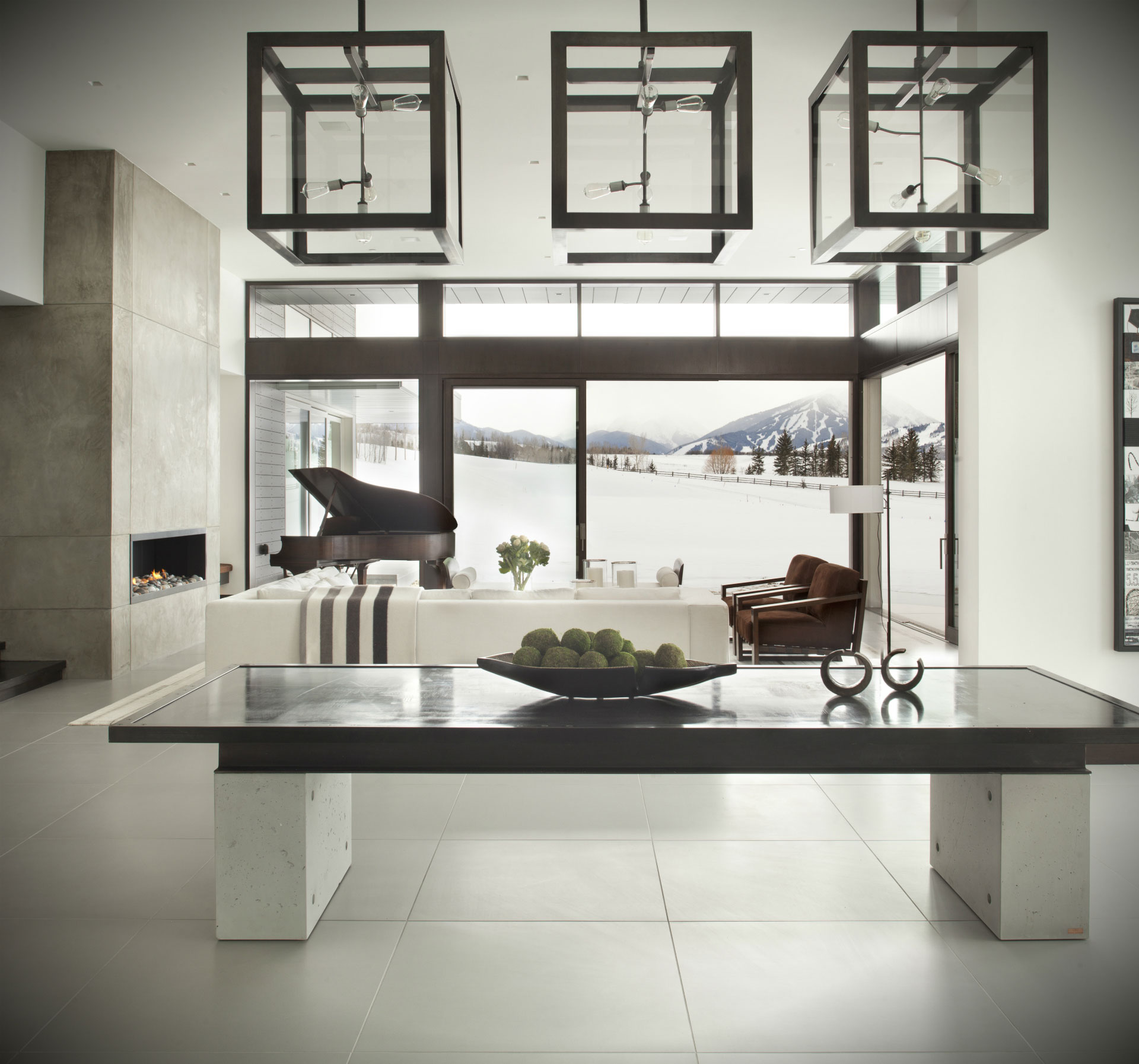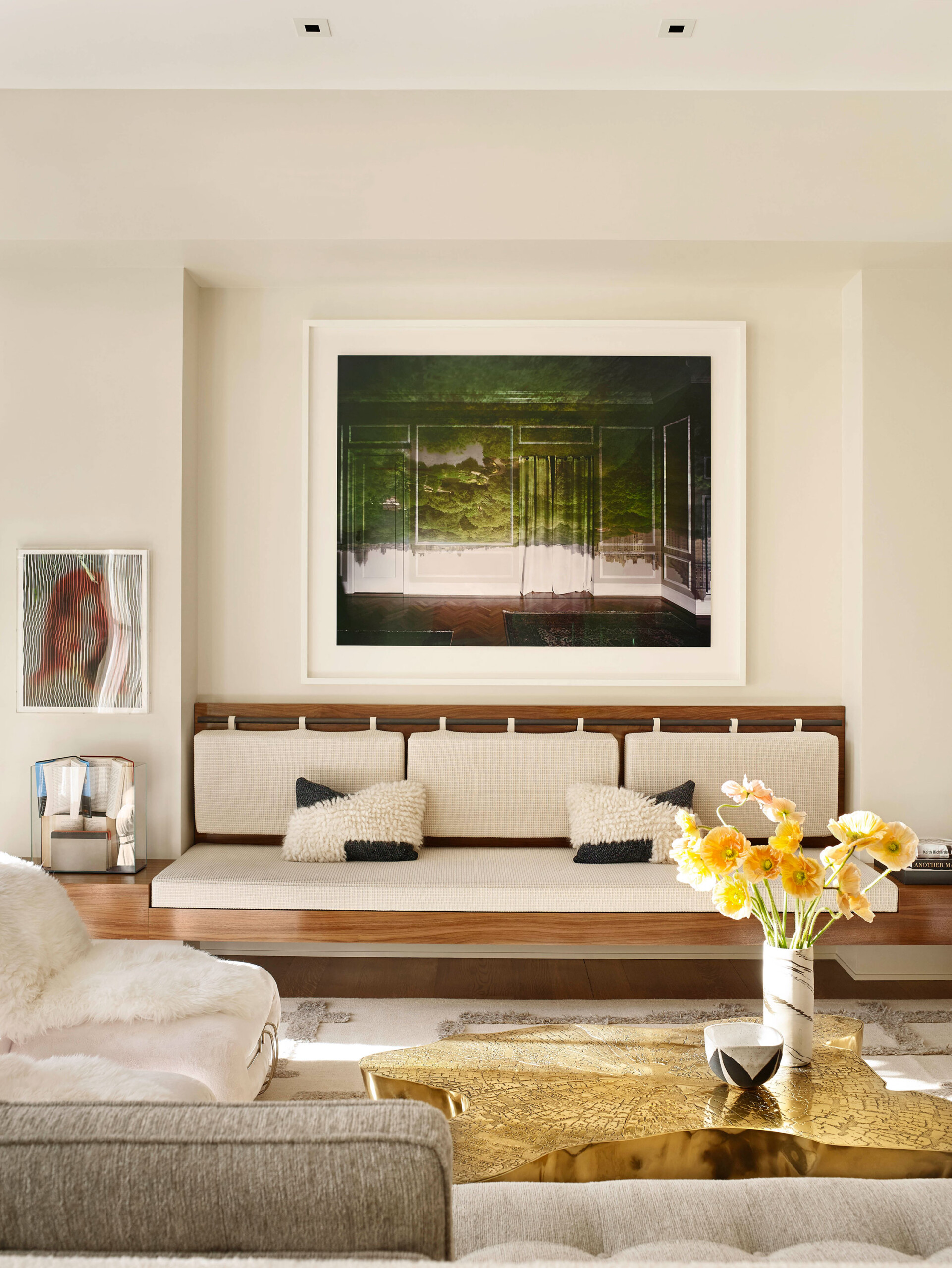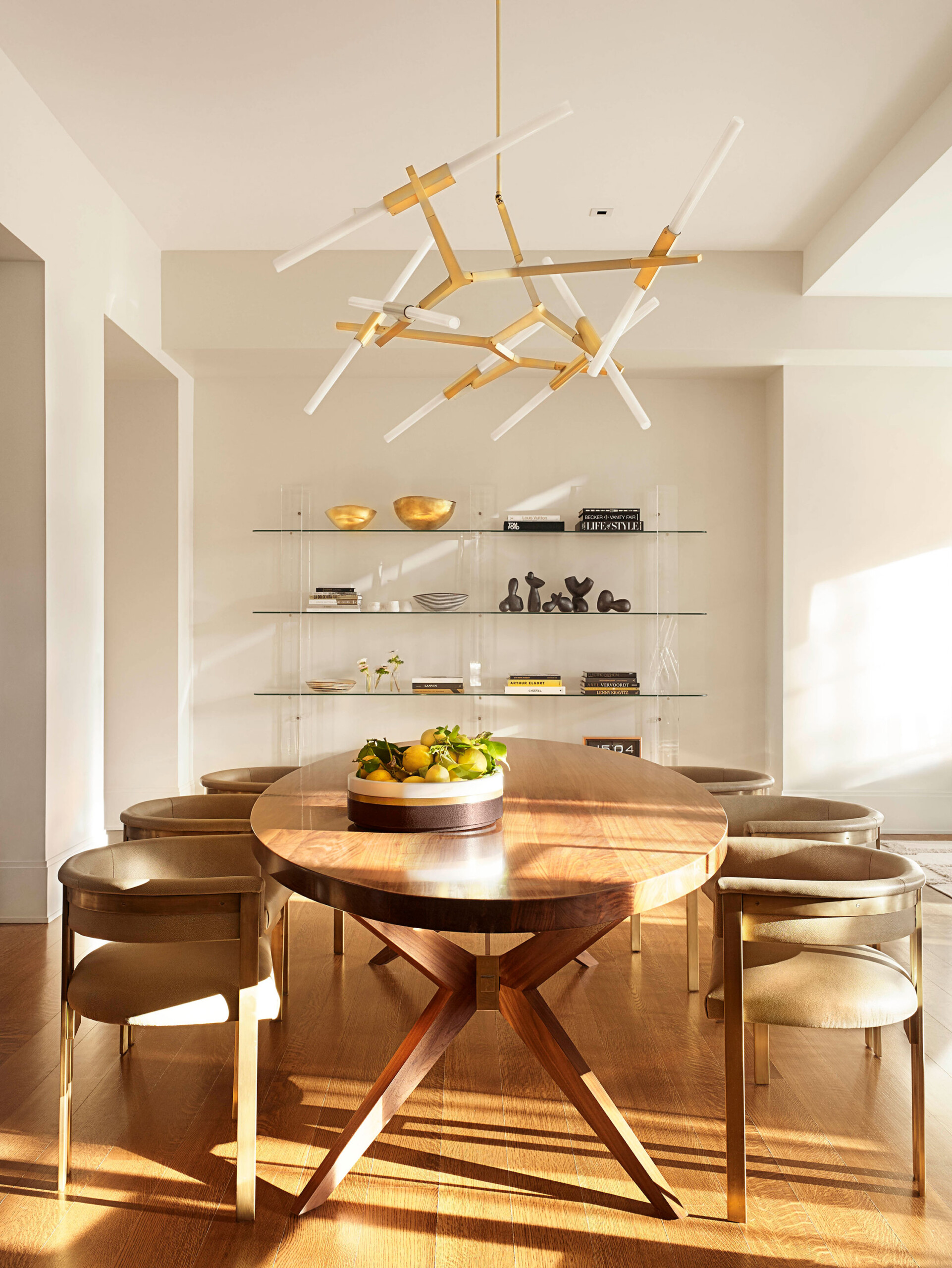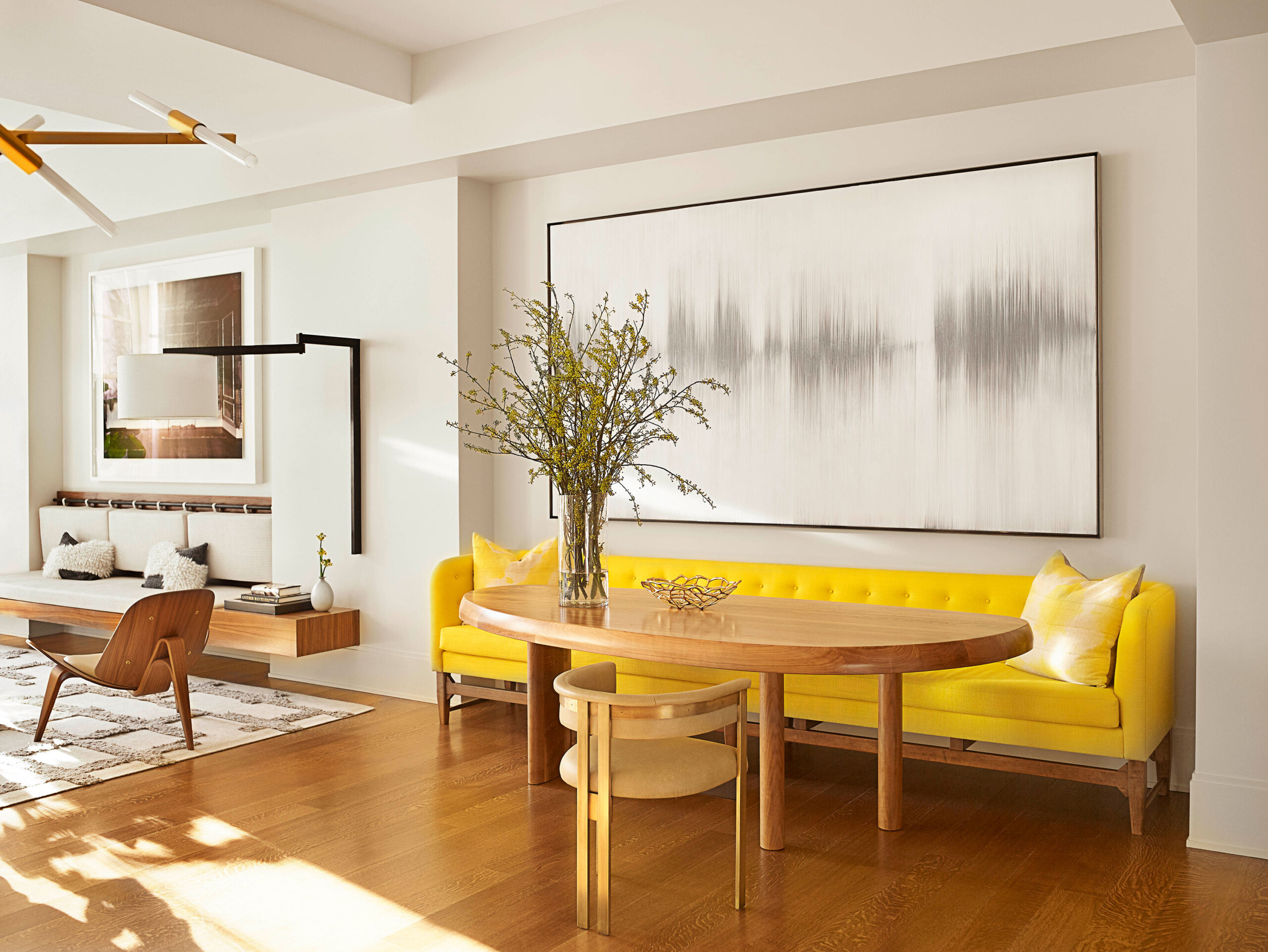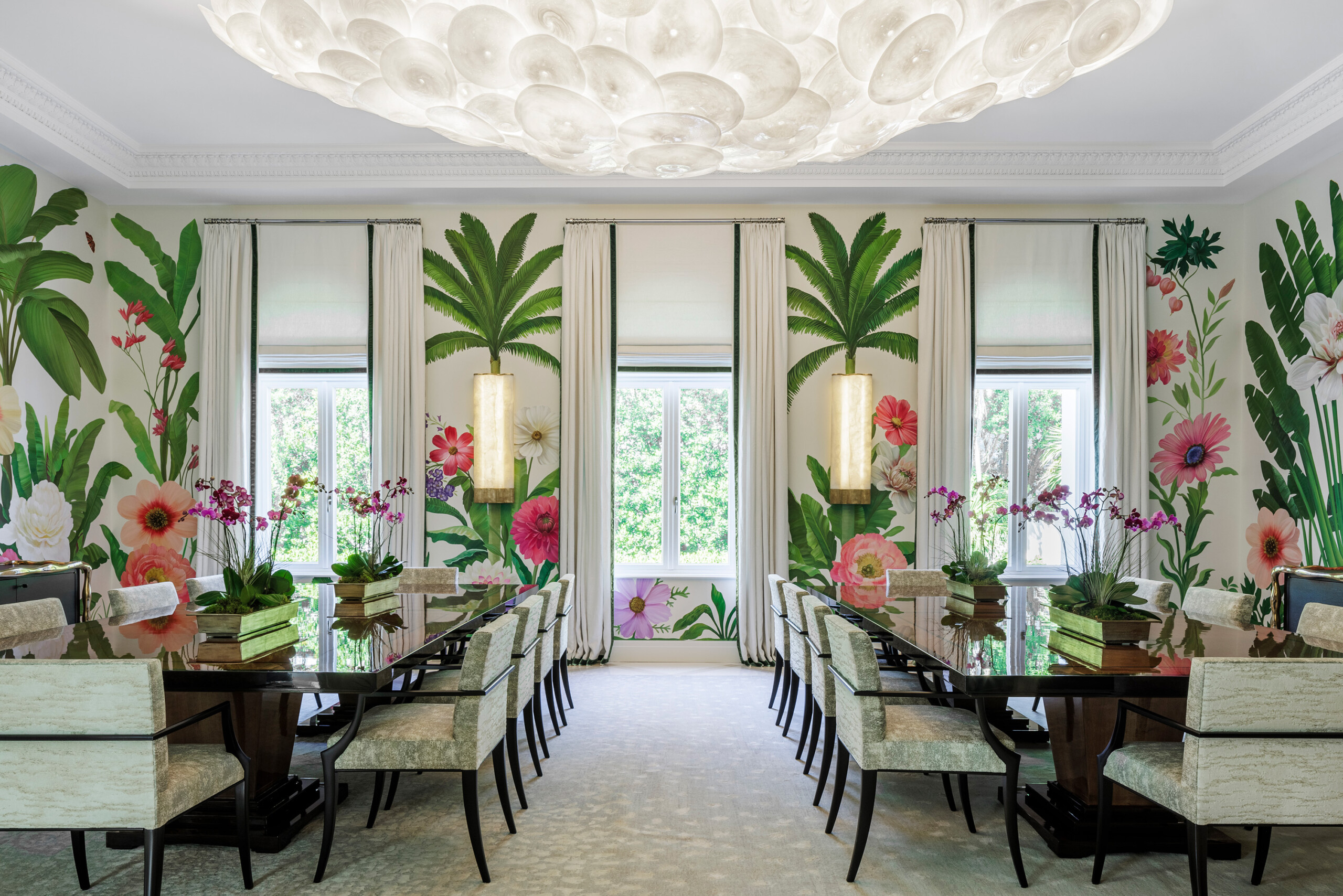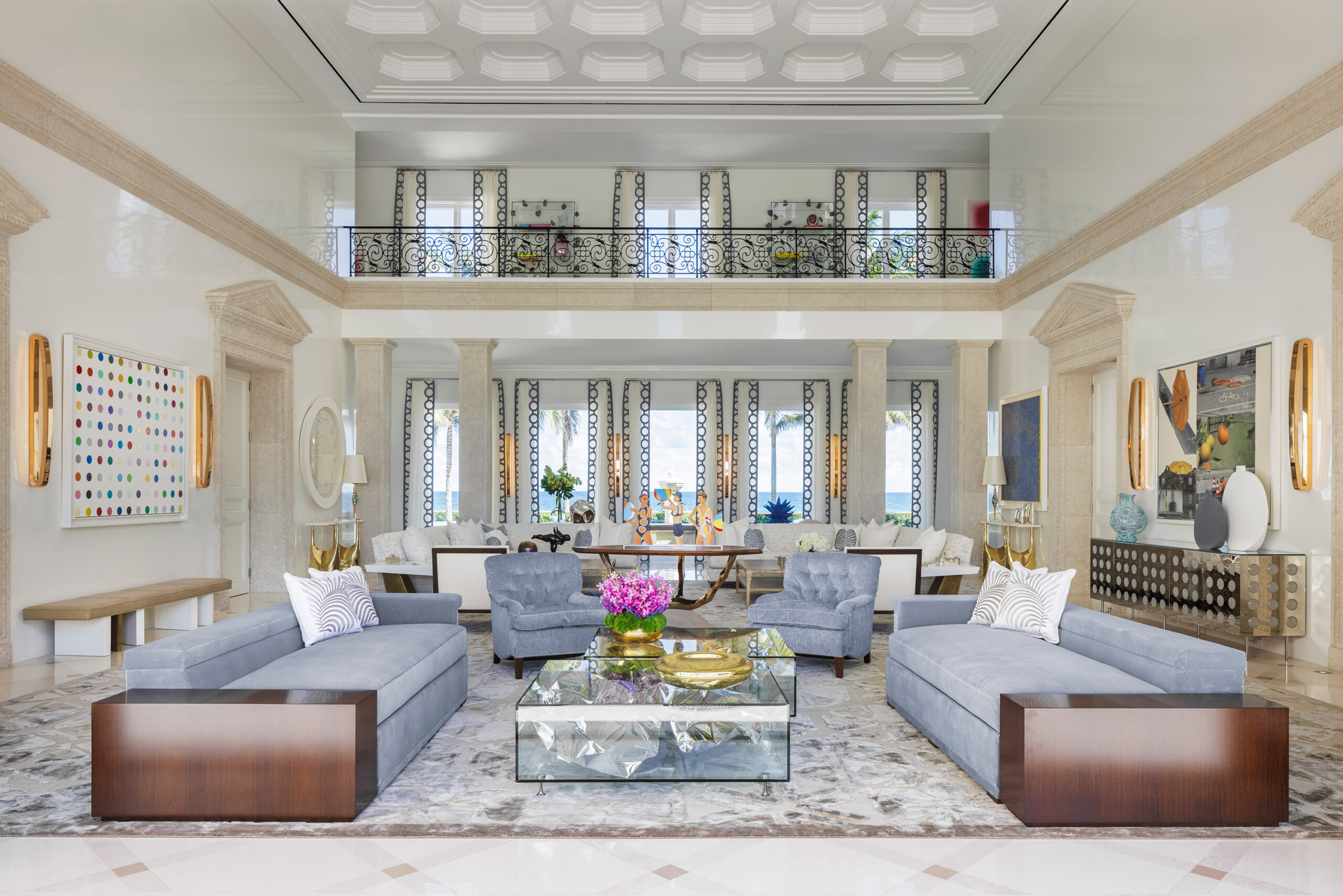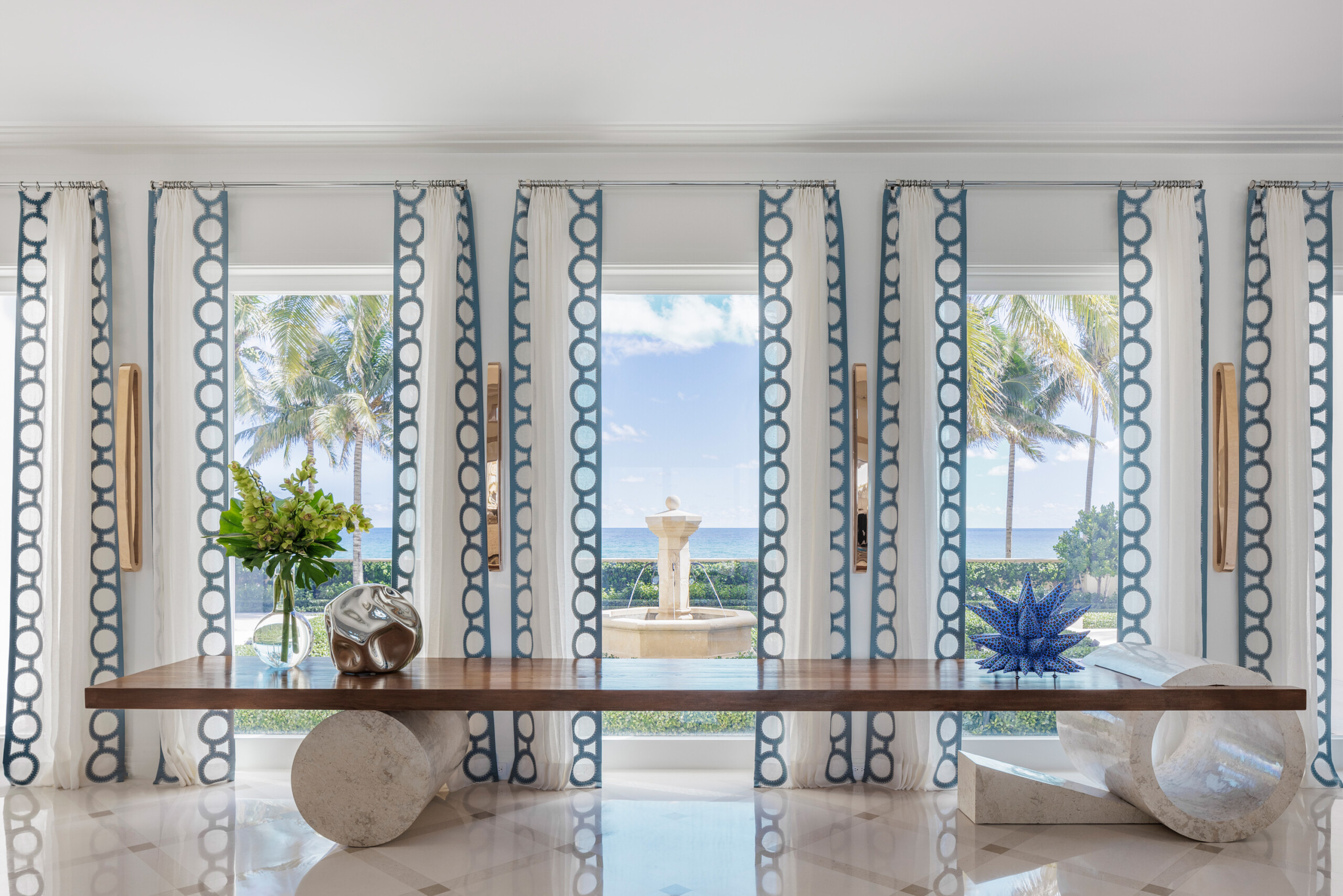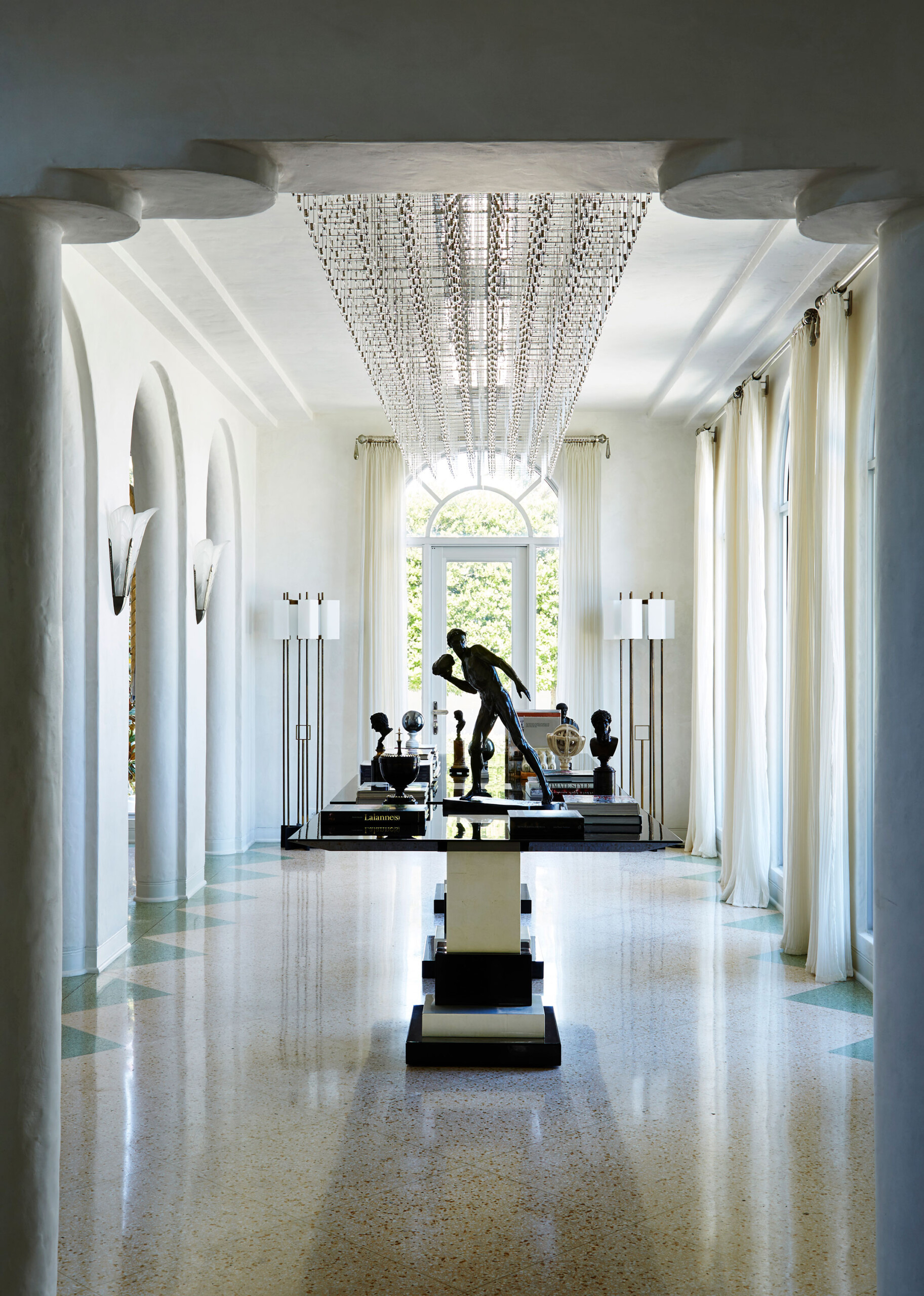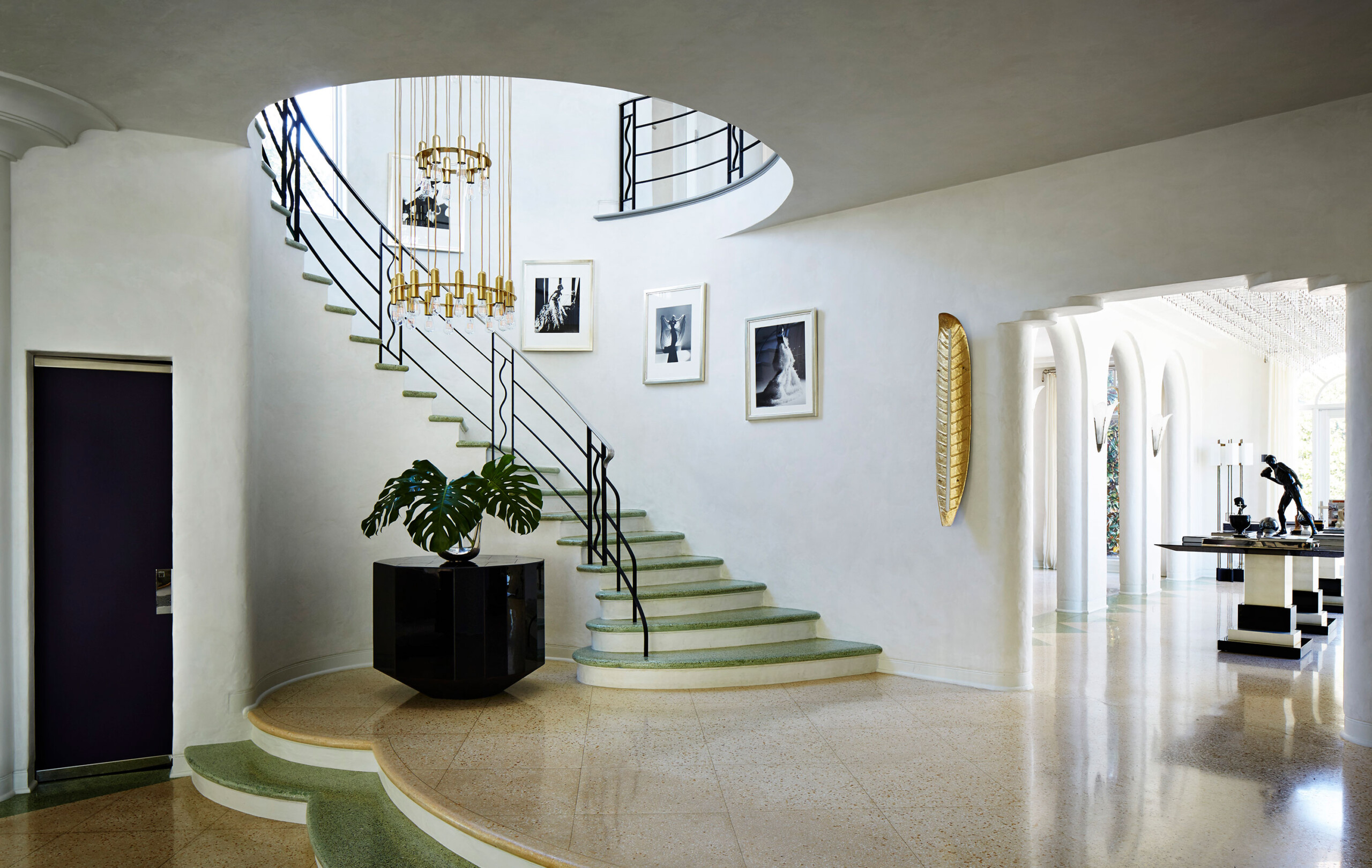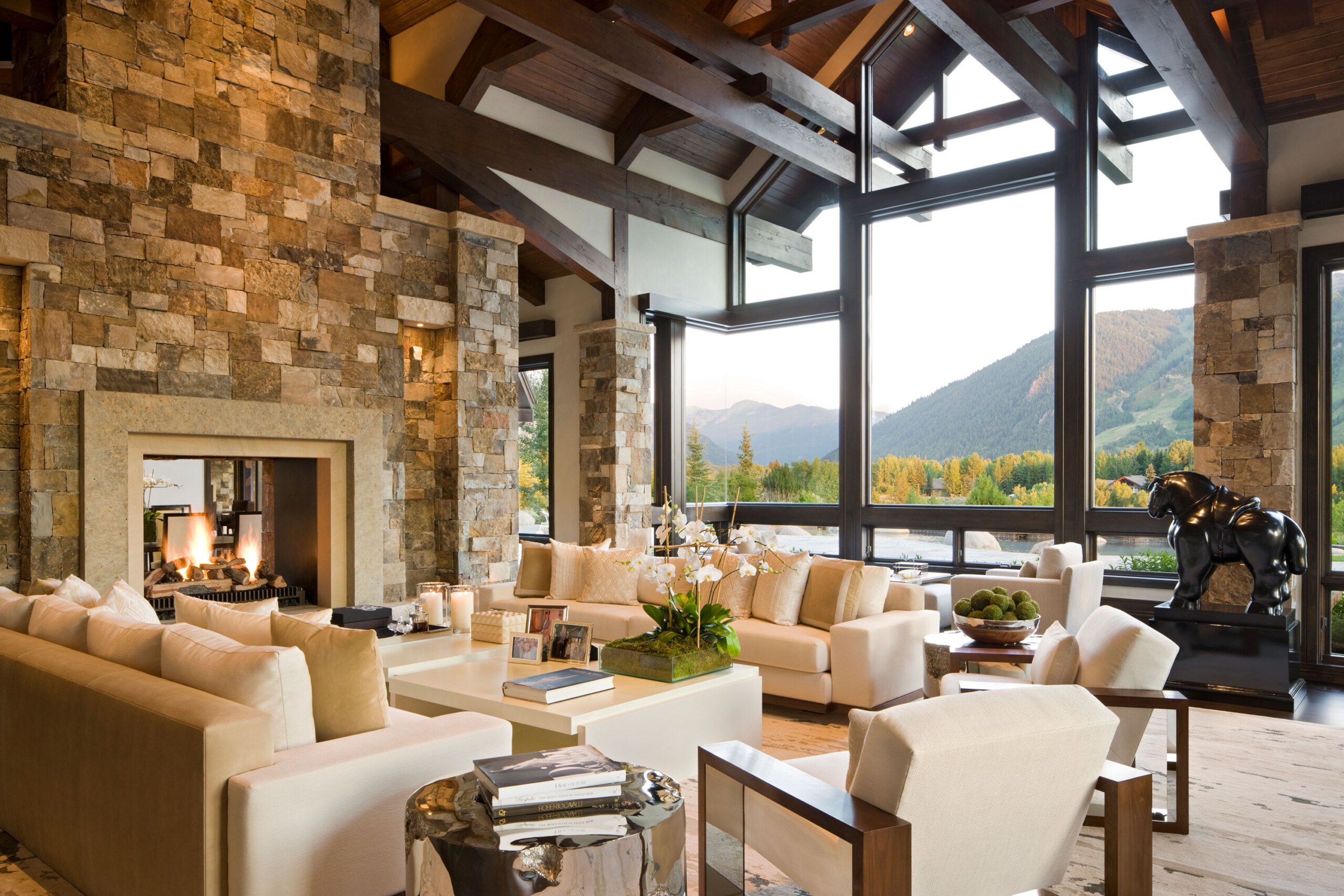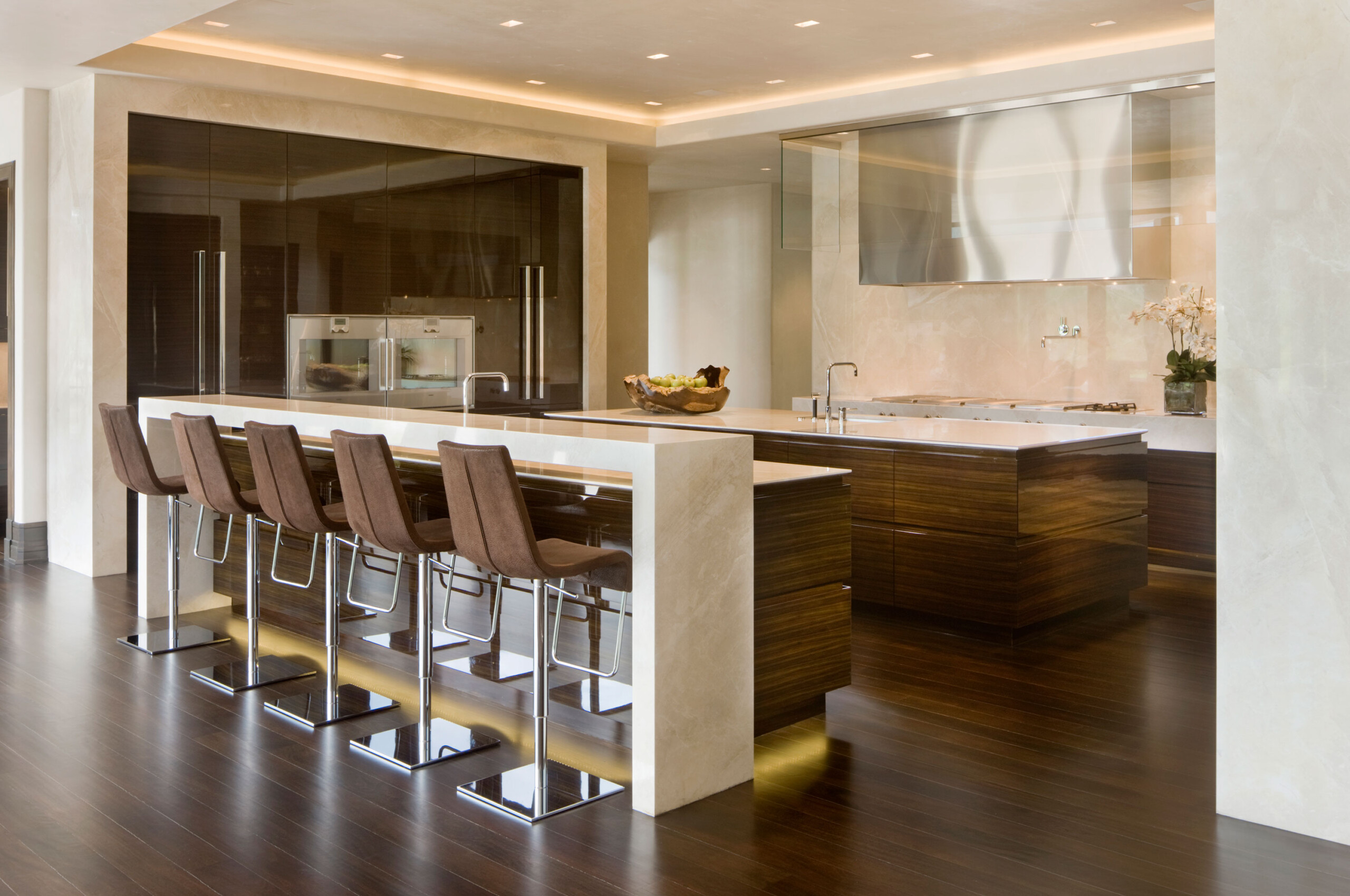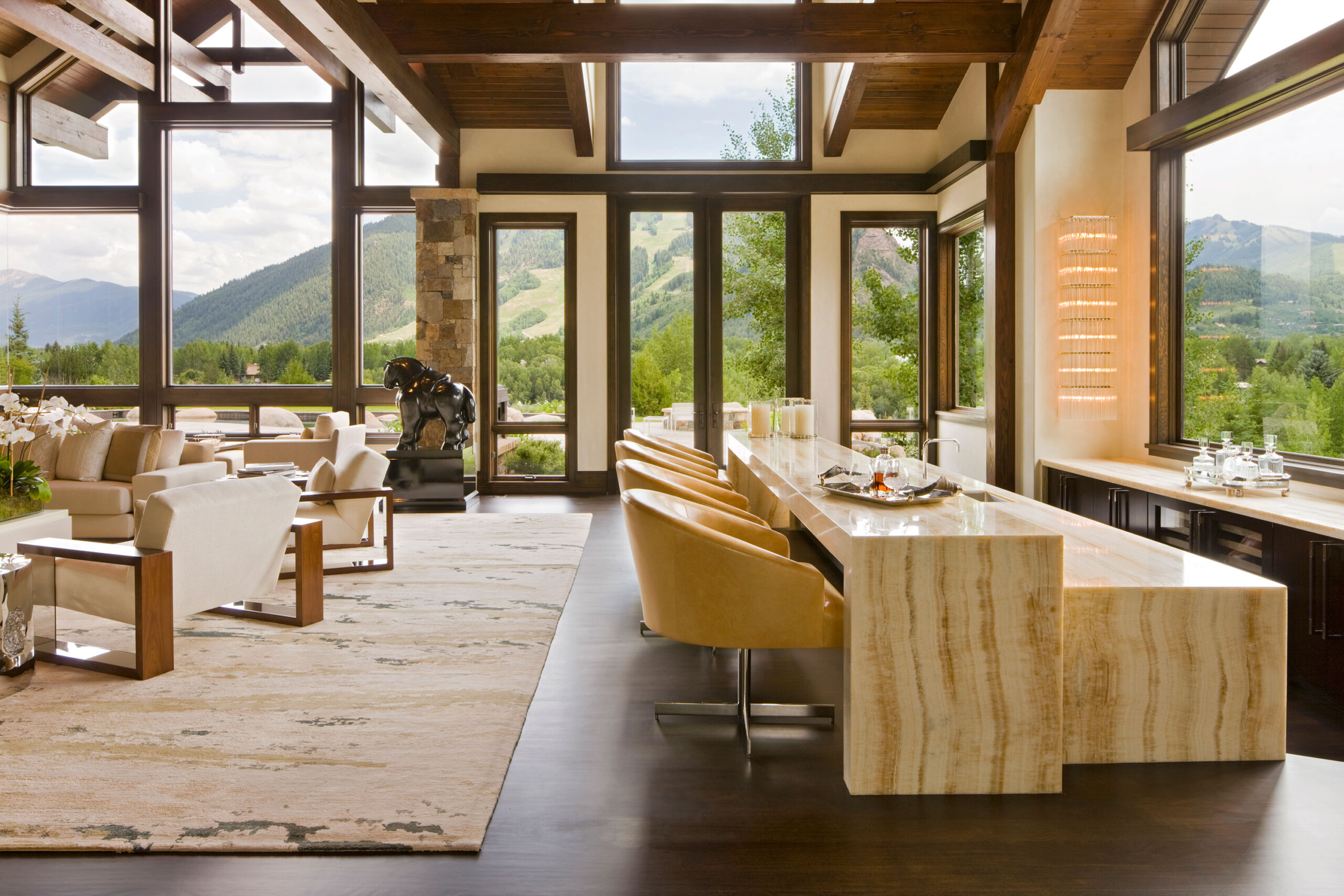Our 5 Most Requested Interior Design Styles
Interior design is vital in creating a comfortable and inviting home environment. However, with so many different styles, deciding on the best fit for your space can be challenging. We created a guide to understand our most requested styles and help you identify the right design for your interior, drawing on your preferences and aspirations.
Contemporary
Contemporary design is defined by its sleek and minimalistic approach, focusing on clean lines and a neutral color palette. This style features materials like metal, glass, and leather, often incorporating geometric shapes and smooth surfaces. Contemporary interiors are uncluttered and sophisticated, emphasizing simplicity and functionality. The design seeks to create modern, adaptable spaces that feel fresh and elegant.
The Modern Mountain escape exemplifies a well-curated contemporary interior. The neutral palette has been pared down to allow the space’s bold lines and geometry to stand out.
Mid-Century Modern
Mid-Century Modern design emerged in the mid-20th century, drawing inspiration from the design aesthetics of the 1950s and 60s. Clean lines, organic shapes, and a harmonious mix of contrasting materials such as wood, metal, and glass characterize this style. The color palette typically includes neutral tones punctuated by bold pops of color. Mid-Century Modern design emphasizes functionality and simplicity, creating a sleek, sophisticated look that remains timeless.
The Madison Square Park residence showcases a Mid-Century Modern interior. The project uses natural tones, warm woods, and touches of bright yellow in a way that feels very inviting and in keeping with the mid-century influence.
Coastal
The Coastal design style is inspired by the ocean and beach, creating a light, airy, and relaxed atmosphere. This style emphasizes natural materials like wicker, rattan, and linen and features a color palette dominated by neutrals with splashes of blues and greens inspired by the sea. Coastal design aims to create a serene, comfortable space that feels casual and livable.
Our Winter Retreat project serves as a compelling example of coastal design. Drawing on the vibrant, saturated colors of Florida, this interior brings the essence of the beach indoors in a playful yet sophisticated way.
Art Deco
Art Deco design, which emerged in the early 20th century, is characterized by its glamorous and luxurious aesthetic. This style features bold geometric shapes, rich colors, and lavish materials such as lacquer, chrome, and glass. Art Deco furniture often includes dramatic curves and angles, exuding opulence and sophistication. The design aims to create visually striking interiors that celebrate modernity and elegance.
The glamorous and opulent qualities of Art Deco design are best shown in our Historic West Palm Beach residence. The stylized architecture and masterfully curated design create a portal back in time.
Transitional
Transitional design blends traditional and modern elements, creating a balanced and timeless look. This style features a neutral color palette and a mix of classic and contemporary furniture. The furniture often combines both curves and straight lines, and the overall design incorporates both ornate and simple details. Transitional interiors aim to create a harmonious, cohesive space that is both comfortable and sophisticated, bridging the gap between old and new.
Our Willoughby Way residence demonstrates how transitional design can exquisitely blend traditional and contemporary elements. This space, with its timeless and harmonious ambiance, is a testament to the beauty and functionality of transitional design.
